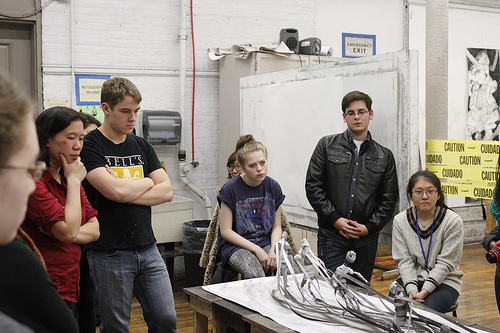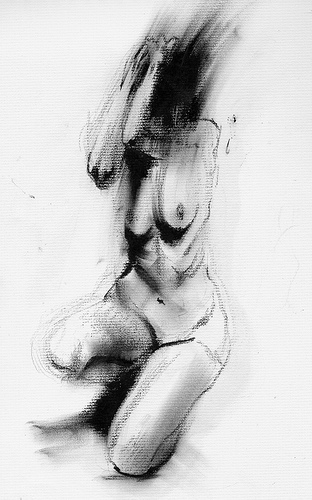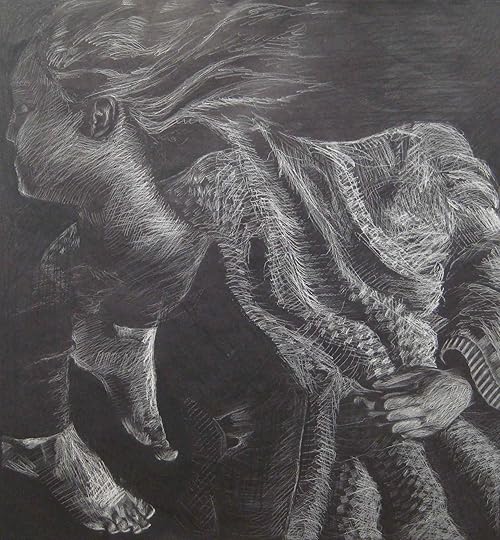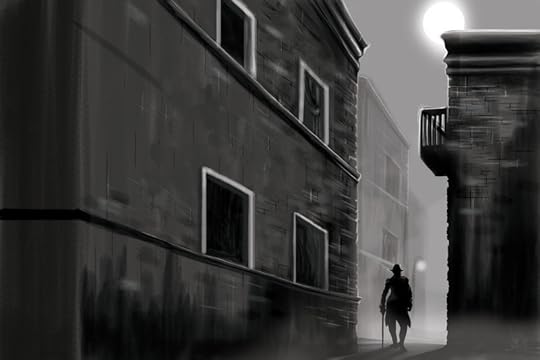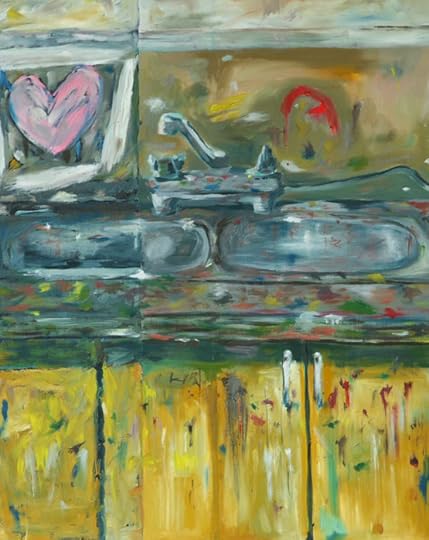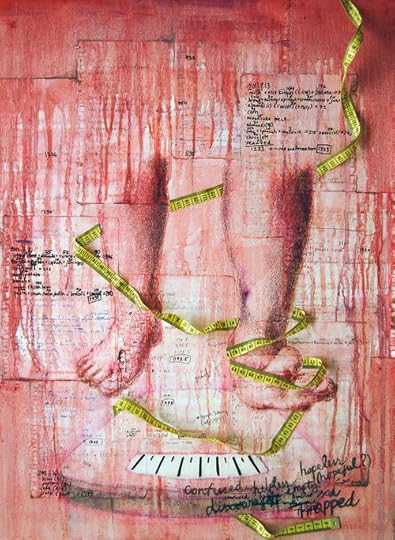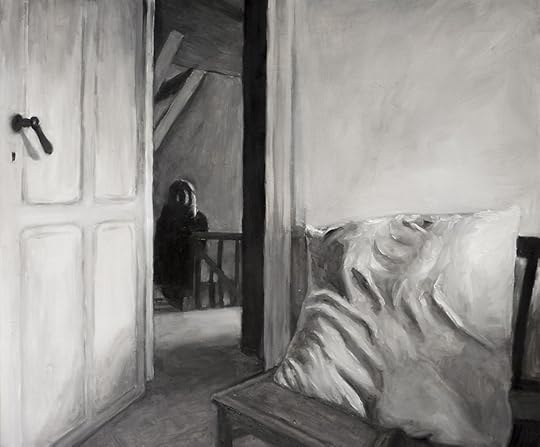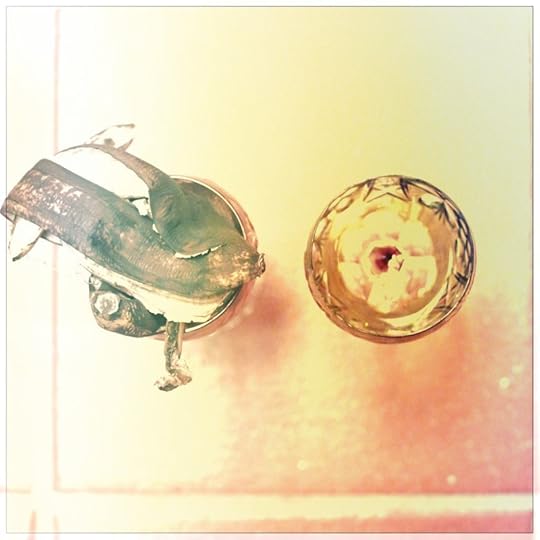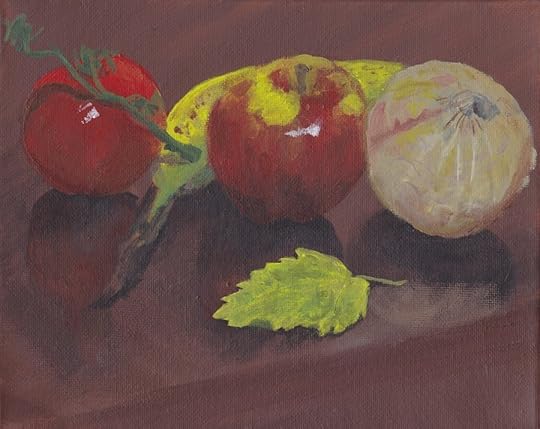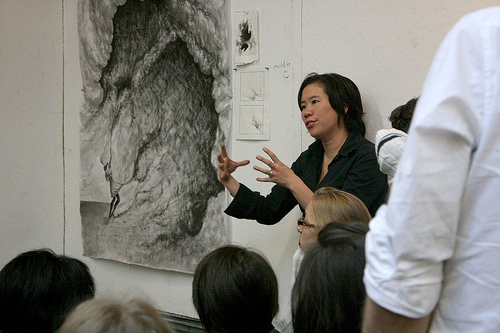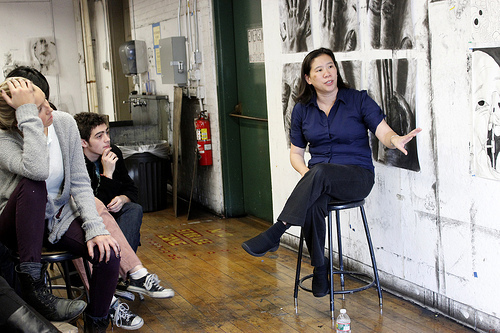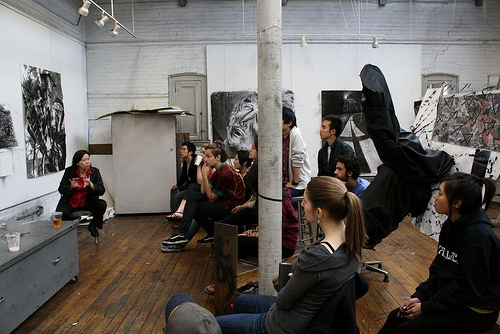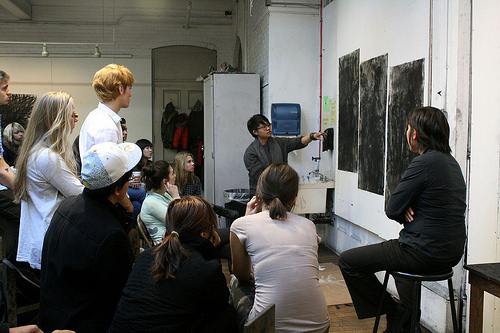Clara Lieu's Blog, page 47
August 20, 2013
Ask the Art Professor: What does it take to get a job at an animation studio?
Welcome to “Ask the Art Professor“! Essentially an advice column for visual artists, this is your chance to ask me your questions about being an artist, the creative process, career advice, a technical question about a material, etc. Anything from the smallest technical question to the large and philosophical is welcome. I’ll do my best to provide a thorough, comprehensive answer to your question. Submit your question by emailing me at clara(at)claralieu.com, or by posting here on this blog. All questions will be posted anonymously. Read an archive of past articles here.
Here’s today’s question:
“ I’m a beginning art student studying graphic design, and I’ve always wanted to work in a cartoon studio setting. Places like Nickelodeon or Cartoon Network that are not your normal work places per say. All my life, my family has always said that it was impossible to get a job like that, and to not even try. Well, here I am going into graphic design, but I want to know: What exactly does it take to land that kind of job, what should my portfolio have, and is it even worth trying???”
Animation studio jobs are insanely competitive, as there are thousands and thousands of people out there who desperately want to be working in that field. You would be competing with people who have completed professional degrees in animation and illustration, and many others who not only have degrees, but who have been working professionally in the field for some time. Getting a job would require an enormous commitment on your part, and would require years of hard work and rigorous training. I have a number of acquaintances from RISD who went on to work at studios like Pixar, Disney, and Nickelodeon. My memories of them during my undergraduate years at RISD is that they obsessively did gesture drawings around the clock like there was no tomorrow, and were both highly disciplined and incredibly industrious workers. You have to be prepared to devote every part of your life to this initiative, it’s that competitive.
If all of the above sounds intimidating to you, then I would say that it’s not worth trying. If hearing that makes you feel enthusiastic, motivated, and revved up to go, then I think it’s totally worth trying. Do your research in advance and make sure that you know what you would be getting yourself into. This is not a job that you can work towards occasionally, it practically has to be in your blood.
One basic requirement of an animation studio position is a solid grounding in traditional art. That means having really strong drawing skills, especially in gesture drawings of the human figure and of animals. The expectation is that all of the drawings are executed from direct observation, which means multiple trips to the zoo to draw animals in person, and countless hours drawing from a live nude model. Most animation degree programs require that students take courses in all areas of animation, to build a basic grounding of the overall process of making animation.
Jobs in animation studios are often times very specialized, so you would apply for a position in a specific area, like storyboards, character design, backgrounds, animation, etc. Technically speaking a portfolio would generally consist of artwork that highlights that area of specialization, as well as a reel of a number of your animated works. I’m not in the field, so I can’t really get more specific than that, but that’s a fairly good approximation of what would be expected in an application.
Related articles:
“How do I become a children’s book illustrator?”
“Can I make a respectable income on freelance illustration?”
“Where is a good place to start with graphic novels?”


August 19, 2013
Ask the Art Professor: What are common mistakes in college portfolio submissions?
Welcome to “Ask the Art Professor“! Essentially an advice column for visual artists, this is your chance to ask me your questions about being an artist, the creative process, career advice, a technical question about a material, etc. Anything from the smallest technical question to the large and philosophical is welcome. I’ll do my best to provide a thorough, comprehensive answer to your question. Submit your question by emailing me at clara(at)claralieu.com, or by posting here on this blog. All questions will be posted anonymously. Read an archive of past articles here.
“This year, I’ll be a junior in high school. It feels like this is my last year to improve my techniques before working on portfolios for college…sometimes it’s too much pressure to think about how I’ll be stacked up against many talented kids my age during the college submission process. Everyone is so wonderful and talented! What are common mistakes in submissions? What shows the difference between a weak student and a strong student? I have one year left to prepare – what should I specifically focus on to improve my chances?”‘
A strong student will command not only technical mastery over their material, but also be innovative and passionate in terms of their subject matter and approach. On the flip side, you can have a weak student who may have good technique, but perhaps is working with subject matter that is obvious and cliche. A strong student’s work will stand on it’s own, and not look like it’s lifted from some other artist or style. A weaker student might copy something from somewhere else. Strong students are prolific and experimental with their art materials; they are willing to try out unusual methods for handling their art materials. At the opposite end of the spectrum, a weaker student might use the same art materials all the time, and use them in a predictable, common manner.
There are a number of “classic” mistakes that I see over and over again when evaluating portfolios for college. I can guarantee if that if you avoid these mistakes like the plague, that you will automatically have a major advantage over a significant portion of the other applicants. Remember, admissions officers have looked at literally thousands of portfolios, and most of these mistakes are nothing new to them. Making any of these mistakes will get you eliminated from the acceptance pile very quickly.
In conjunction to this list below, also be sure to read this article I wrote, which talks about what you can specifically focus on to improve your chances.
1) Copying from photographs. To a trained eye, it’s generally glaringly obvious when something has been copied from a photograph. Drawing from a photograph is a cheap shortcut. Not only are the results always lousy, but copying from photographs will only develop bad habits that will be difficult to “undo” later. (read this article I wrote which states reasons for why you should draw from direct observation)
2) No anime, manga, or fan art. Period. Don’t even think about it.
3) Poor quality photographs of the art itself. Invest the time and money into photographing your artwork properly. Too often I see terrible photographs of good artwork, which makes me nuts. With digital photography, this is affordable and easy to accomplish, it just takes time and labor. This means properly cropped images, even lighting throughout the image, images that are in focus, etc.
4) Blank backgrounds. Art students in high school will frequently create images focusing so much on their main subject matter that they leave the background blank. Be the exception and work on the background as much as you work on everything else in the image, and create backgrounds that are just as lively and engaging as the main subject.
Related articles:
“What is the purpose of a degree in fine art?”
“What should you include in an art portfolio for art school or college?”
“When you have a fine arts degree, what do you do for the rest of your life?”
“How do you preserve your artistic integrity within the strict time limitations in an academic setting?”
“Is art education really so popular in western countries?”
“What do you do after you’ve finished formalized training?”
“Should art students study abroad even if it distracts from job preparation?”
“Who should you make art for, yourself or your professor?”


August 18, 2013
Mixed emotions
I found a possible studio space through a friend of a friend. It’s a sublet, so I wouldn’t have to commit to a lease which I kind of like the idea of. It’s 400 square feet, and is in the Waltham Mills Artist Association, my dream location for a studio. I still have yet to see the space in person and work out the logistics, but it’s there, and I’m seriously thinking about it.
The issue I’m grappling with is that it’s a bit of a financial stretch for me. I’m experiencing a whole range of emotions: part of me is completely and utterly thrilled at the thought of having my first professional studio so close to home, but the other part of me has a fear that I’ll become one of those artists who spends all of their time working to pay for a studio that they never get to use. However, the greatest concern I’m feeling is that if I don’t take this studio that I will stop making my artwork entirely, which is way more frightening than anything else right now.
It will be a risk, that’s for sure, which is what makes me think I should do it. What do I do, do I take the plunge?


August 17, 2013
Ask the Art Professor: How do you retain the integrity of your artwork when promoting it?
Welcome to “Ask the Art Professor“! Essentially an advice column for visual artists, this is your chance to ask me your questions about being an artist, the creative process, career advice, a technical question about a material, etc. Anything from the smallest technical question to the large and philosophical is welcome. I’ll do my best to provide a thorough, comprehensive answer to your question. Submit your question by emailing me at clara(at)claralieu.com, or by posting here on this blog. All questions will be posted anonymously. Read an archive of past articles here.
Here’s today’s question:
“‘Making it’ as an artist seems so dependent upon self-promotion. But although networking is crucial, it seems entirely fake— as though it detracts from the integrity of the piece. What are your thoughts on this and how do you cope?”
The hard truth is that the success of an artist is highly contingent upon self-promotion. It’s like the saying about the tree that falls in the forest: if you make all of this artwork and no one sees it, does it even exist? Without self-promotion the work will remain inside it’s bubble and have no reach, so it’s crucial that you find some way to market your work and get it “out there”.
In terms of preserving the integrity of a work, presentation and context is everything. You should always make sure that you are comfortable with how your artwork is being presented. This means being selective about where you allow your work to be shown, as certain presentations and contexts can actually be detrimental to the work if they are of poor quality or not properly established organizations.
I remember when I had just gotten out of school, and was desperate to show my work literally anywhere, a friend of a friend recommended a local gallery that was having an exhibition about the human figure. I was making tons of figurative oil paintings at the time, it seemed like the perfect match. I showed up at the gallery, which looked like a badly assembled patchwork quilt of trashy, cheap artwork. I asked the woman there if she had any paperwork or contract for me to sign. She said no, but picked up a random notebook on the table and said I could sign my name in it. I should have walked out at that point, but I didn’t, and while I was leaving the gallery I had this itch at the back of my head that my artwork wasn’t going to be handled safely and felt nervous about the fact that I had left my artwork with them.
I did eventually pick up my artwork and thankfully, my artwork was fine. However, that venue didn’t help me at all. In fact, I don’t even list that exhibition on my curriculum vitae anymore because to me it’s an embarrassment that I showed there. Since that experience, I have always heavily researched any venue that I am considering putting my artwork in. I look for red flags: if the gallery has no website, if the gallery takes more than 50% commission, if the gallery wants to charge me money to show there, etc. I also look at what artists have shown there before, to make sure that the gallery has with other established, professional artists in the past.
In online venues I try to exert as much control as possible about where my work gets shown and how it’s presented. This means having a custom designed website that looks professional, clean, and contemporary. A domain name also matters a lot, so invest in that. Naturally, this is significantly more expensive as you will have to hire a professional, but it’s all worth it in the end. I only show my best work on my website, and that means having professional, high quality photographs of all of the work and no works in progress. I’ve seen artist websites where people post every little sketch they’ve ever made, thinking that it will make them look prolific, when actually it has the opposite effect. Strictly control and edit the content that you put online, and in this way, you can retain the integrity of the work. Less is definitely more.
Of course though, once your work is “out there”, there will be circumstances where people will post your work without your permission, sometimes ending up in contexts that are not as desirable. Just the other day when I Googled myself, I found some of my nude drawings from my “Falling” project listed under “Erotic Art” on a magazine’s website. Be prepared for this to happen, and accept that it is unfortunately part and parcel of having your artwork online.
A figure drawing from my “Falling” project
Related articles:
“How do you know when your artwork is good enough to show to the world?”
“How do you get people to notice your artwork online?”
“When is it too early to start promoting your work on the Internet?”


August 16, 2013
Crit Wall #17
Welcome to “Crit Wall“, where I offer online critiques of individual art pieces. To submit, send me a link to one image by commenting here, or by emailing the link to me at clara(at)claralieu.com. Please, NO ATTACHMENTS. Include the media, size, and title if you have one. Only submit original, finished works, no works in progress or sketches. Artwork created for a RISD degree program course is not eligible. You’ll receive notification if your piece is selected to be critiqued. Only one submission per person please, and know that I will not be able to critique every single work due to the volume of submissions. All images will be posted anonymously.
Untitled
40″ x 50″
acrylic on canvas
Overall, this piece has an extraordinary, dynamic quality that is full of incredible energy and movement that is seen throughout the entire composition. There is a tremendous amount of depth in the piece; there is the feeling that many shapes are lunging forward while others take a step back and immerse themselves into the background. It’s almost as if the sense of gravity is shifting dramatically with all of these shapes hurtling through space.
In terms of color, there is an excellent play between warm and cool colors in the painting. The intensity of the the yellows and the blues are juxtaposed well against the warmth of the earth tones. The cool whites on the right side of the painting are a nice resting place for the eye, and provide clarity in the piece. The shapes seen throughout the painting do very well in terms of scale; there are some very tiny, detailed shapes while there are several that are quite bold and large. This variety of scale is very exciting and effective.
There is a beautiful balance of transparency and opacity in the painting; some shapes appear to be very solid and heavy while other sections appear to be translucent and ethereal. The layering of all of the shapes is quite accomplished and successful. The edges of the shapes are wonderfully handled; some shapes are very sharp, crisp, and graphic while others seem to melt slowly into the background. This contrast makes for an incredibly diverse and engaging quality to the painting.
The edges of the piece could be engaged with more; very few of the shapes are cropped off the page. The shapes in the painting would seem to extend further out of is some of them went off the edge of the page. There is one black shape in the middle of the top edge of the page which achieves this nicely, it would be helpful if there were more moments like that in the entire painting.
Past “Crit Wall” pieces are below. Click on the images to read the critique.


August 14, 2013
Online mentoring available now!
I’ve been very excited about starting up my mentoring sessions, it’s an idea I’ve been toying with for some time now, and it’s wonderful to see it come to fruition. This seems like the perfect supplement to my teaching at RISD, and I like the idea of working with artists at all different stages of their career.
I did some research, and apparently online mentoring is a big thing now. So I am pleased to announce that I will now be offering online, one-on-one artist mentoring sessions. This will be in addition to in person sessions in the Boston area that I announced in yesterday’s post.
Want to get a professional critique on your artwork? Need help promoting yourself as an artist? Preparing a portfolio for art school? Trying to balance your art with your life? Sign up today!
ONLINE MENTORING:
$80 for a one hour session
$60 for a 45 minute session
$50 for a 30 minute session
Fees must be paid in advance of each session via Paypal. All sessions will be done via Skype. Cancellations made less than 24 hours in advance will be charged a $30 fee. Please email me at clara@claralieu.com to set up an appointment or to get more information.
IN PERSON MENTORING:
$100 for a one hour session
$75 for a 45 minute session
$60 for a 30 minute session
Fee is due at each session. I will come to your studio or home. Cancellations made less than 24 hours in advance will be charged a $50 fee. Please email me at clara@claralieu.com to set up an appointment or to get more information.


August 13, 2013
Artist mentoring program
Want to get a professional critique on your artwork? Need help promoting yourself as an artist? Preparing a portfolio for art school? Trying to balance your art with your life? I am now offering one-on-one artist mentoring sessions online and in the Boston area. All levels are welcome.
IN PERSON MENTORING:
$100 for a one hour session
$75 for a 45 minute session
$60 for a 30 minute session
Fee is due at each session. I will come to your studio or home. Cancellations made less than 24 hours in advance will be charged a $50 fee. Please email me at clara@claralieu.com to set up an appointment or to get more information.
ONLINE MENTORING:
$80 for a one hour session
$60 for a 45 minute session
$50 for a 30 minute session
Fees must be paid in advance of each session via Paypal. All sessions will be done via Skype. Cancellations made less than 24 hours in advance will be charged a $30 fee. Please email me at clara@claralieu.com to set up an appointment or to get more information.


August 12, 2013
Studio search
This past weekend I went down to Providence to visit one of my artist friends who also went to RISD. She just recently got space in a studio in Pawtucket. She has a little cubicle that she shares with someone else, and then there is a really big open, communal space where many of the artists work. It’s great because she only has to pay for the little cubicle which is very affordable, and she gets to be a part of a lively artist community.
I got really excited talking to her about her space and how it’s transformed her artistic life. She’s recently had a huge creative surge, and the studio space was a big part of that. Taking inspiration from her, I’m now embarking on a search for a studio. I was trying to tell myself that I could make do with my garage for the time being, but the fact of the matter is that that is not a long term solution. There are just too many distractions at home, and I’m having trouble focusing on my studio practice. I enjoy writing and blogging when I’m at home, but the studio practice just isn’t happening right now. The bottom line is if I want to be able to make my upcoming 6′ x 4′ figure drawings, I will have to have a professional studio.
It’s exciting but a little scary at the same time. I’ve never had a studio before, and the thought of having a real space to myself is thrilling. Naturally, the tough part is the financial commitment that having a studio requires, and that of course is going to complicate my search. The other aspect of the search is that I want to find a studio that is part of an already established artist community. This way I’ll get to connect with other professional artists and participate in open studios events as well. My dream is to have a studio at the Waltham Mills Artists Association, because it’s close to where I live, and because I already have friends who have studios there.


August 11, 2013
Ask the Art Professor: When do you let go of an idea?
Welcome to “Ask the Art Professor“! Essentially an advice column for visual artists, this is your chance to ask me your questions about being an artist, the creative process, career advice, a technical question about a material, etc. Anything from the smallest technical question to the large and philosophical is welcome. I’ll do my best to provide a thorough, comprehensive answer to your question. Submit your question by emailing me at clara(at)claralieu.com, or by posting here on this blog. All questions will be posted anonymously. Read an archive of past articles here.
Here’s today’s question:
“When you’re stuck on doing an idea but it just isn’t working out, when do you recommend letting the idea go and starting over from scratch, and when should you keep thinking about it? I personally have a hard time letting go of an idea, I think I can just keep thinking about it and I’ll come up with something I’m happy with, but sometimes I should just put the idea away for later.”
This is a tough one, as the circumstances can vary so much depending on the person and on the ideas at stake. It’s hard because no one wants to give up on an idea prematurely, before that idea has been given the time it needs to ripen. Some ideas really do need a certain number of hours of labor to come to fruition. On the other hand, it can be frustrating to feel like you wasted your time on an idea that was no good to begin with. In my opinion, searching for and developing ideas is always worth your time. The brainstorming process is just as critical, if not more, than the execution of the final work. Even the dead ends that you hit along the way are necessary, and inform your creative process in some way. Accept that you will have to wade through an immense amount of bad ideas to get anywhere.
One approach that can help here is to try to push through each idea fairly quickly. Resist the temptation to dwell on an idea for too long, especially early in the process. Don’t develop “favorites” in the beginning of your brainstorming. Once you’ve weeded through a good amount of ideas, and you’ve chosen your “finalists”, you can then give each idea more attention and time.
I look for certain signals in my work process when I have to make a final decision on whether to keep an idea or not. What I look for is how passionate I feel about the idea, and whether I think I can work with that idea long term. I imagine in my head going through every single step of the entire project, beginning to end. If I imagine this process in my head and feel excited and motivated by every task, that’s a good sign. If I feel tired just thinking about it, that’s a sign that my enthusiasm isn’t strong enough to sustain in the long term.
Letting go of an idea is always so hard to do, especially when you initially thought that idea had potential. It always feels like a disappointment when you have to let go; you feel like something you really wanted to believe in let you down. Facing the fact that an idea just isn’t working is never easy to accept.
Just remember that ideas don’t have to be permanently deleted from your brain, they can emerge again at a later time when the situation is more conducive to that idea moving forward. Sometimes it’s just not the right time and place for a certain idea to mature. Over the years, I’ve accumulated a substantial number of ideas that are on the back burner. I like that they are still sitting there, waiting to be called forward some day.
Related articles:
“How do you keep pushing yourself to get to that next level?”
“Would you improve more if you took art classes than just studying on your own?”
“How do you learn the basics?”
“How do you break out of your comfort zone?”
“How do you get out of thinking you can’t get any better?”
“How do you develop patience for learning curves?”


August 9, 2013
Ask the Art Professor: Who should you make art for, yourself or your professor?
Welcome to “Ask the Art Professor“! Essentially an advice column for visual artists, this is your chance to ask me your questions about being an artist, the creative process, career advice, a technical question about a material, etc. Anything from the smallest technical question to the large and philosophical is welcome. I’ll do my best to provide a thorough, comprehensive answer to your question. Submit your question by emailing me at clara(at)claralieu.com, or by posting here on this blog. All questions will be posted anonymously. Read an archive of past articles here.
Here’s today’s question:
“Since art is so subjective, students often like to execute their pieces for their own preference, which may not necessarily be something that impresses the professor. Students don’t mind it because nevertheless, they make the pieces and therefore they should make it “for” themselves not “for” the professor. Is it wrong to think that way?”
I’ve always believed that as a student, one should never try to make artwork that is “for” the professor. When you’re in school, there’s no reason to restrict yourself in such a way, and doing so will hold you back tremendously in terms of the kind of progress you’ll be able to make.
Having been on both sides of the fence, I can understand where the tendency to please the professor comes from for many students. After all, who doesn’t want to get a positive critique from their professor on their artwork? It would seem that the quickest, most straightforward way to get a good critique is to figure out what type of artwork your professor likes, and then do that. On the contrary, this strategy often times backfires. Not only is it impossible to predict what your professor will like, but you will almost always end up making work that you have no interest in. It’s essentially a losing situation from all ends.
Professors will respect you for having your own ideas and for making artwork that has its own sense of purpose, even if it’s in complete contradiction to their personal taste and aesthetics. A good professor will know to keep their personal biases out of the critique and to evaluate the work objectively. Many of my students have commented to me in the past that once they stopped trying to please me, their experience and their artwork instantly got better. You have to create the artwork that you want to make, not what you think someone else wants to see. Everyone has their own personal list of reasons for why they make artwork, and pleasing their professor should be not be on that list.
When you get out of school and you start to work professionally for a specific client, that is the situation where it is absolutely necessary to please a single individual. I was a portrait painter at the beginning of my career, and nothing mattered except the happiness of the client. I had to do whatever it took to keep them happy, even if it meant doing what I saw as a creative compromise in the artwork. If they asked for it, I had to do it. And half the time, the clients themselves don’t even know what they wanted, all they ever seemed to know was what they didn’t want. Once I was told that the pink cheeks on a portrait were too bright. I toned down the pink ever so slightly to fix it, and was then told it looked too pale. You’ll have more than enough opportunities to please others in the future, so take advantage of every situation you have to make work for yourself.
Related articles:
“What is the purpose of a degree in fine art?”
“What should you include in an art portfolio for art school or college?”
“When you have a fine arts degree, what do you do for the rest of your life?”
“How do you preserve your artistic integrity within the strict time limitations in an academic setting?”
“Is art education really so popular in western countries?”
“What do you do after you’ve finished formalized training?”
“Should art students study abroad even if it distracts from job preparation?”




